Fabric Focus: Savor the Sensuousness of Silk
http://decor-ideas.org 07/25/2015 03:13 Decor Ideas
Silk is probably the most revered fabric in the world. With its smooth hand and shimmery good looks, silk is elegant, natural and classic. Its understated sheen is delightfully lustrous without the garish shine found on some synthetics. But if you thought silk was only for fancy spaces, you may be surprised. Learn more about this special fabric and how and where you might use a touch of it in your home.
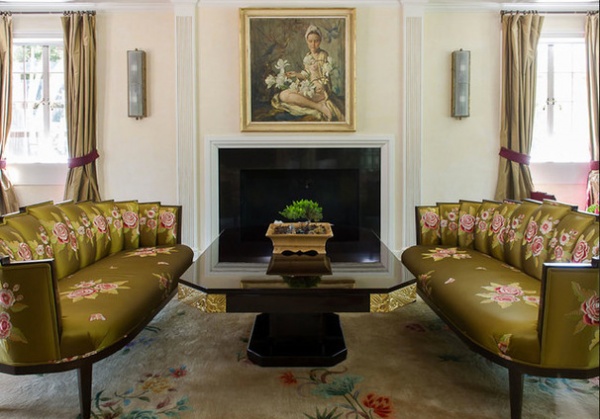
According to legend, silk was discovered by an ancient Chinese empress who was enjoying a cup of tea under a mulberry tree when a silk cocoon fell into her hot tea and began to unravel.
Bewitched by the glimmering threads, she is credited with kick-starting the development of silk production with the Bombyx mori, or mulberry silkworm, around 3000 B.C. Silk changed the world with the formation of the Silk Road from Asia to the West, and today it continues to be a hot commodity for clothing and home furnishings.
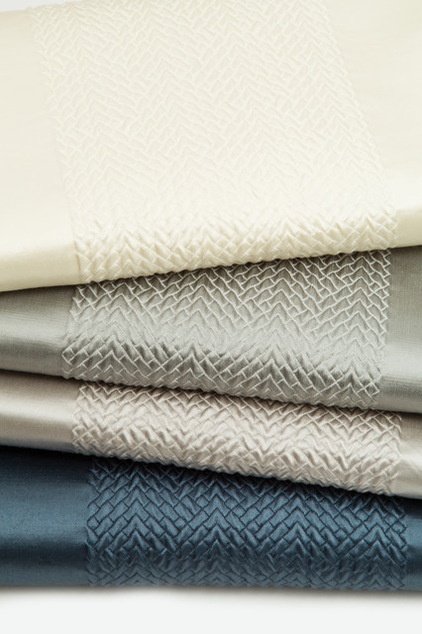
Benefits of silk
Refined texture. Silk has a nice hand; it’s smooth but not slippery like some synthetic fabrics. “There are faux silks on the market that do mimic the sheen of silk, but nothing will ever give the lasting impression of fine quality and elegance like real silk does for me,” designer Karla Trincanello says.Strong and resilient. Silk has high tensile strength and is known as the strongest natural fiber. Protein-based, silk has been used in parachutes, and each fiber is as strong as an iron wire with the same diameter. Silk is also resilient to crushing and resists wrinkling. Lightweight insulation. Cool in the summer and warm in the winter, silk breathes and is the most insulative fiber with the lightest weight. It also is able to absorb about 20 percent of its dry weight in moisture. Resistant to the detrimental four “M’s.” Silk is inherently resistant to mold, mildew, moths and mites. Rich, deep color. Silk takes dye really well, which is why you see a lot of rich, deep and even bright silk fabrics.
Disadvantages of silk
Low abrasion tolerability. While silk is strong, it isn’t an ideal candidate for pieces that will undergo a lot of wear.Prone to sunlight damage. Sunlight wreaks havoc on silk and breaks down the fibers. If you want to use silk on windows or in sunny spots, you will need to take preventative measures, such as using a lining. Having a UV filter on your windows will help too. High-maintenance cleaning. While water doesn’t damage the silk itself, it does affect the surface and often leaves permanent water marks. So silk shouldn’t be cleaned with water; a chemical dry-clean method should be used.Costly. Considering the whole process and rarity of materials, it’s no surprise that silk is expensive. Expect to pay from $75 to about $150 per yard for a plain woven silk fabric. Heavier weight, brocades and embroidered silks often fetch more. Some lighter-weight solids can be found for about $50 per yard.
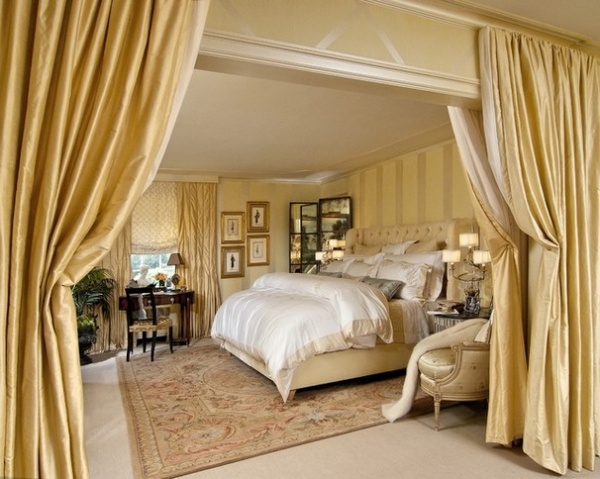
Where to Use Silk
Silk drapery. Trincanello loves using silk in her design projects. “It is always elegant and impressive,” she says. “It creates an aura of fine quality.” She used dupioni silk for the drapery in this bedroom. Dupioni is a type of silk that has a slubby texture running horizontally through the fabric.
Fine-quality silk drapery, Trincanello says, should always be lined and interlined. Lining is a thin white or off-white fabric that protects the drapery material from the sun by providing a barrier between the window and the back side of the fabric. Interlining is a thick intermediary layer between the drapery fabric and the lining that adds weight and substance, similar to a thin blanket.
Interlining gives fullness to the drapes and shows the treatment at its best. “This is not where to cut costs,” Trincanello says. You can see the oomph that the interlining adds to the drapery in the example shown here. Bump is an interlining type made of a mixture of cotton and synthetic fiber that is ideal for silk drapes.
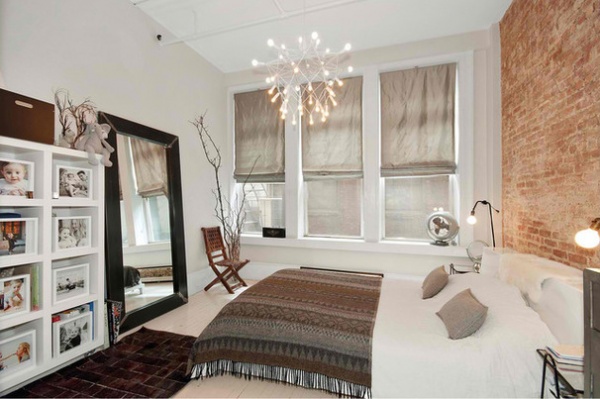
If your space is more contemporary and you feel that traditional full-length drapes might be too formal, consider silk shades. This trio of relaxed Roman shades is made of taupe silk dupioni and adds texture and sparkle to the room without being overpowering.
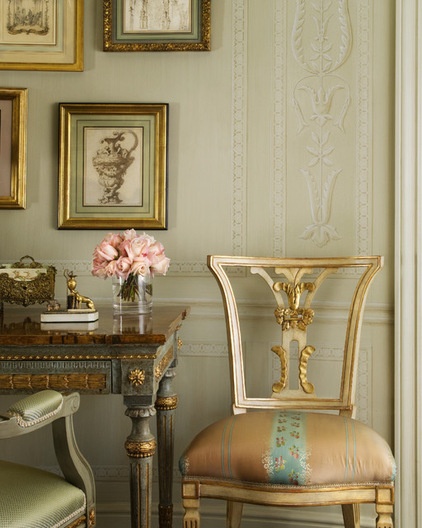
Silk upholstery. Silk isn’t ideal for everyday, heavily used furniture. Designer Jane Antonacci suggests reserving it for an occasional piece that gets light use.
Like drapery, silk upholstery needs some extra prep: a layer of knit backing permanently bonded to the back side of the fabric. The knit backing adds stability to the silk for durability and prevents it from slipping. It helps anchor it in place against the upholstery padding. Specialty workshops add the knit backing, so it’s an extra step in the process.
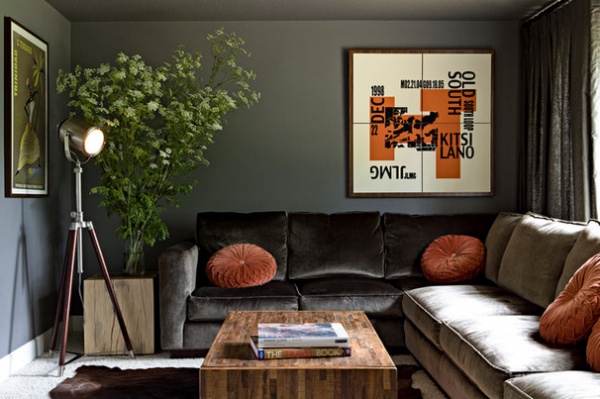
Silk velvet ages beautifully as upholstery but initially shows every spot. “Understanding how it ages and allowing the age to develop is worth it,” Antonacci says. “Continue to use it, love it, and it will look better and better every year.”
She advises to also have a stain-protection treatment applied to silk upholstery fabric. However, make sure the treatment is solvent-based and appropriate for silk. Water-based stain treatments may stain and discolor silk and should be avoided. Otherwise you can forgo a preventative stain treatment and go for a look of “faded glory,” she says. “Then love it to death.”
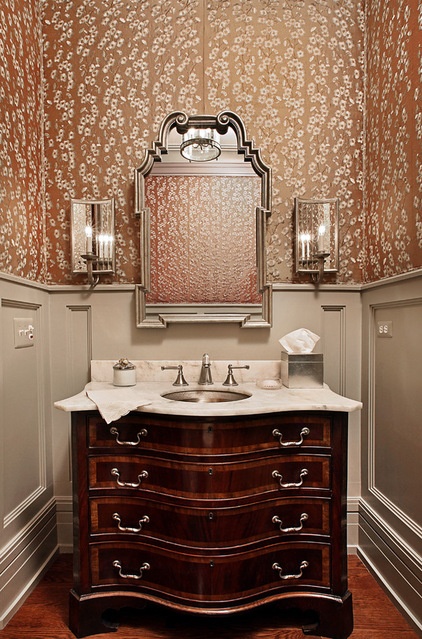
Silk-upholstered walls. Upholstered walls offer unsurpassed thermal insulation and also help control acoustics. Like upholstered furniture, silk-upholstered walls also need to have a knit backing added prior to installation.
See more on upholstered walls
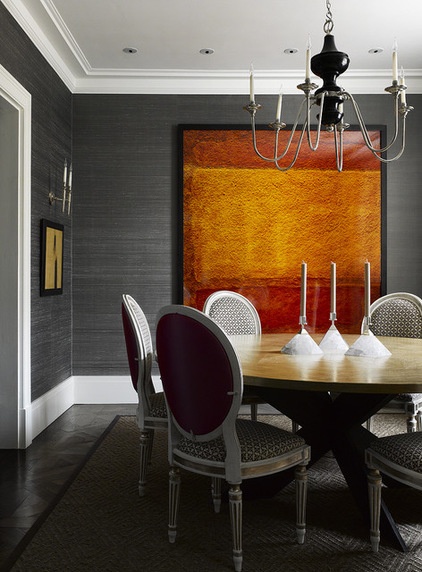
Silk wallpaper. Upholstered walls don’t fit everyone’s lifestyle or budget. But if you like silk’s textured, shimmery appearance on a wall in the glow of light, consider silk wallpaper. It works equally well in traditional and contemporary spaces, like this one. This paper-backed smoky gray silk wallpaper is made by Designtex.
See more on getting started with wallpaper
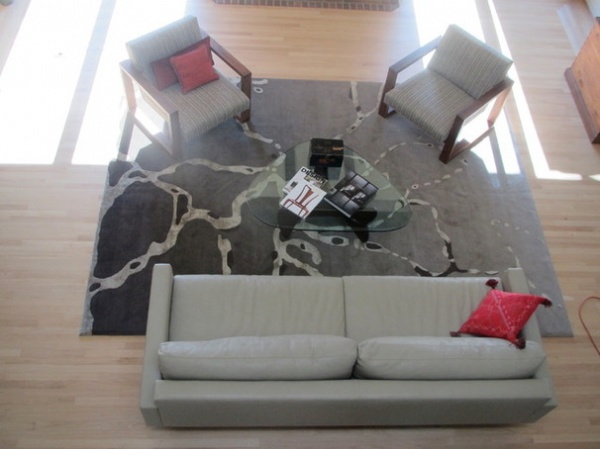
Silk area rugs. You might prefer some silk sheen underfoot. While some traditional Persian area rugs are made entirely of silk, there are also more contemporary pieces made of a blend of wool and silk, like the rug shown here.
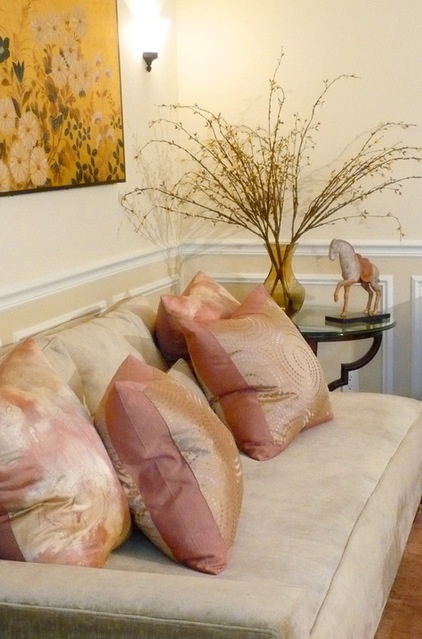
Silk throw pillows. If you want to use silk in your home but don’t have the budget, appropriate piece or lifestyle for silk on a large scale, decorative pillows are always a great option. There are so many gorgeous silks out there, it’s a good opportunity to mix and match silk patterns and colors. The other bonus is that silk for pillows doesn’t need a knit backing. Just make sure you have a quality pillow insert, like a down and feather blend.
See more fabric stories: Chintz | Ticking Stripe | Velvet | Grain Sacks | Crewel | Matelassé | Linen
Related Articles Recommended












